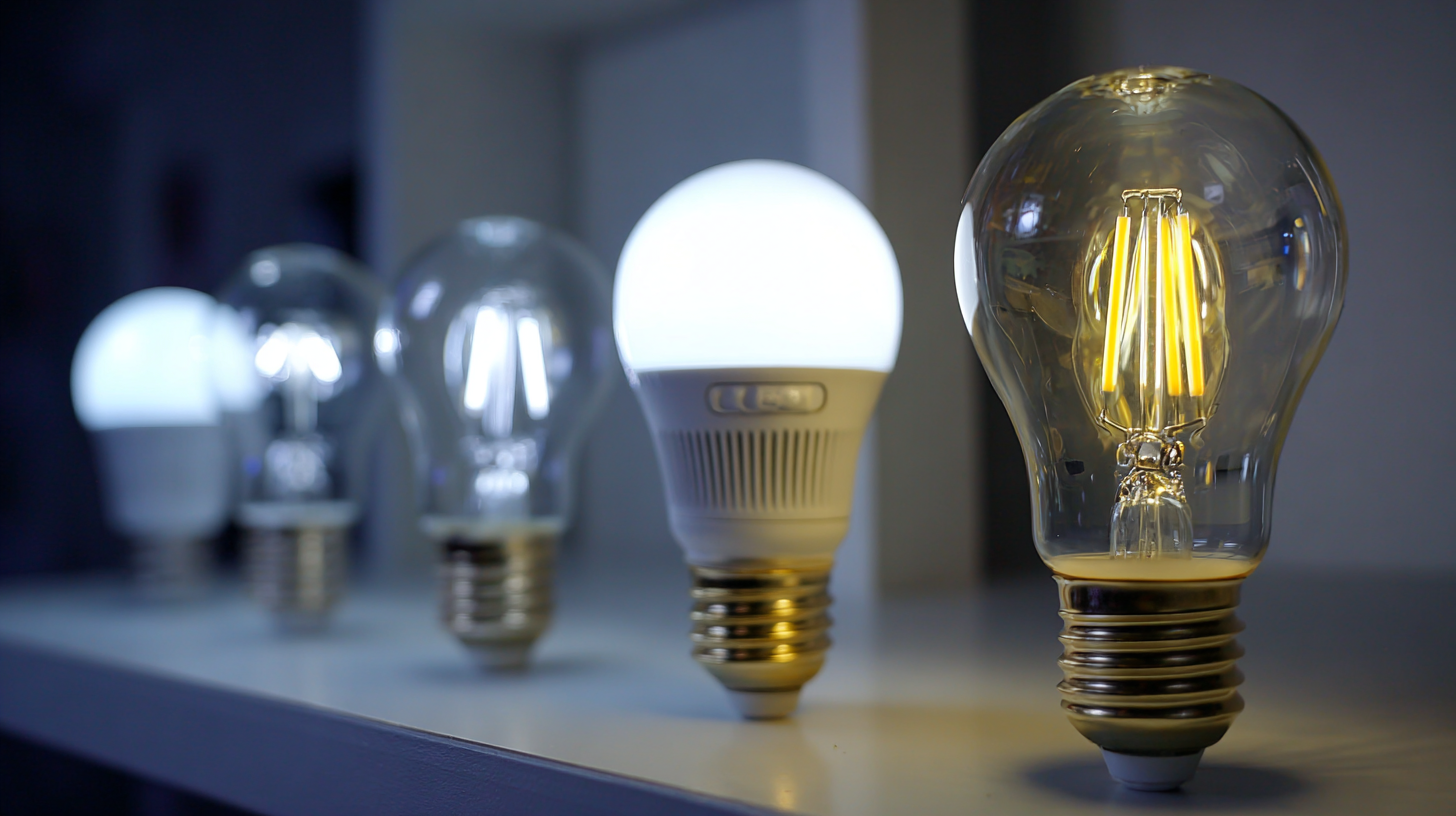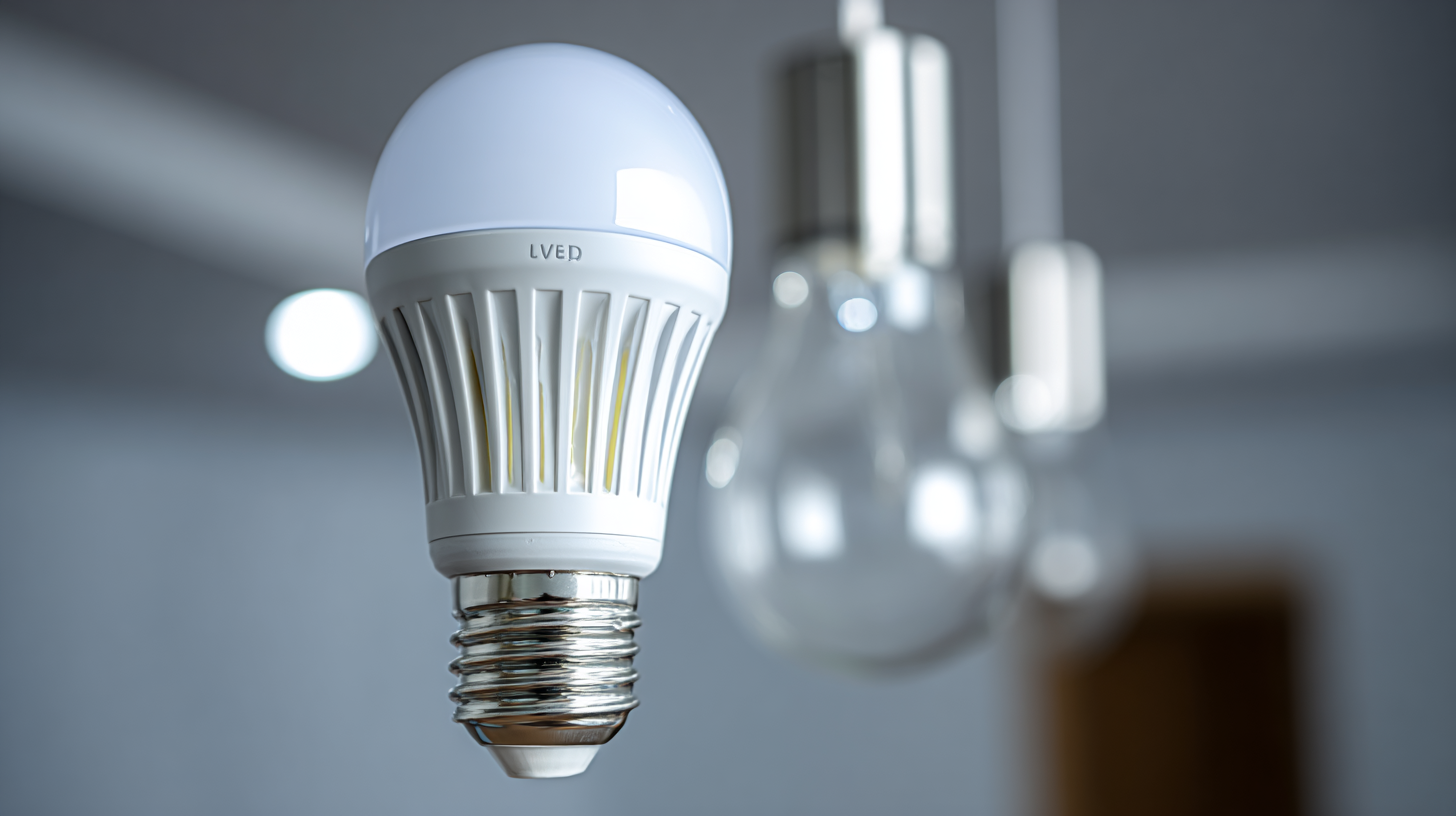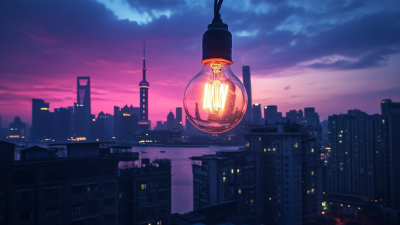How to Choose the Right Led Bulbs for Your Home and Save Energy
 Choosing the right LED bulbs for your home is crucial not only for energy efficiency but also for creating the perfect ambiance in your living space. As more homeowners seek to reduce their energy consumption and carbon footprint, the demand for LED bulbs has surged, making it essential to understand their various types and applications.
Choosing the right LED bulbs for your home is crucial not only for energy efficiency but also for creating the perfect ambiance in your living space. As more homeowners seek to reduce their energy consumption and carbon footprint, the demand for LED bulbs has surged, making it essential to understand their various types and applications.
In this guide, we will explore the different types of LED bulbs available, such as standard, dimmable, and smart LED options, helping you make an informed decision that suits your needs. By considering factors such as brightness, color temperature, and compatibility with existing fixtures, you can find the ideal LED bulbs that enhance your home while saving energy.
Whether you're looking to brighten a cozy reading nook or fully illuminate your kitchen, selecting the right LED bulbs is the first step towards a more sustainable and inviting home environment.
Understanding the Different Types of LED Bulbs for Home Use
When selecting LED bulbs for your home, understanding the different types available can significantly enhance your choice. The most common types include standard A19 bulbs, which are versatile and can be used in various fixtures. They provide a warm light that is ideal for living rooms and bedrooms. Decorative bulbs, such as candelabra and globe styles, are designed for fixtures where the bulb is exposed, offering aesthetic appeal as well as energy efficiency.
Additionally, consider functional LED options like flood and spotlights, which are perfect for highlighting specific areas or artwork in your home. Other types include smart LED bulbs, which allow for connectivity with home automation systems, providing convenience and energy savings through adjustable brightness and color options.
By familiarizing yourself with these various LED bulb types, you can make informed choices that not only enhance the ambiance of your home but also contribute to energy efficiency.
Energy Efficiency Ratings: What to Look for When Choosing LED Bulbs
When choosing LED bulbs for your home, understanding energy efficiency ratings is crucial. Look for the Energy Star label, as it indicates that the bulb meets strict efficiency guidelines set by the U.S. Environmental Protection Agency. Energy Star-rated LED bulbs can use up to 80% less energy than traditional incandescent bulbs, which not only saves you money but also reduces your environmental footprint.
Tip: Always check the lumens rating when selecting LED bulbs. While watts measure energy use, lumens measure brightness. For example, a bulb that produces 800 lumens is equivalent to a 60-watt incandescent bulb, allowing you to choose the right brightness without overpaying for more energy consumption.
Additionally, pay attention to the Color Rendering Index (CRI) and color temperature of the bulbs. A higher CRI signifies better color accuracy, while the color temperature can affect the mood of your space. For a warm and cozy atmosphere, aim for bulbs that emit light in the 2700K to 3000K range. By considering these ratings and specifications, you can select LED bulbs that enhance your home’s lighting while maximizing energy efficiency.
How to Choose the Right LED Bulbs for Your Home and Save Energy
| Light Output (Lumens) | Wattage Equivalent (Incandescent) | Energy Efficiency Rating (Star Rating) | Color Temperature (Kelvin) | Estimated Yearly Energy Cost |
|---|---|---|---|---|
| 800 | 60W | 5 Stars | 2700K | $1.20 |
| 1100 | 75W | 5 Stars | 3000K | $1.50 |
| 1600 | 100W | 5 Stars | 4000K | $1.80 |
| 2200 | 150W | 4 Stars | 5000K | $2.00 |
Light Color and Brightness: How to Match LED Bulbs to Your Space
 When selecting LED bulbs for your home, understanding light color and brightness is crucial for creating the desired atmosphere. LED bulbs come in various color temperatures, typically measured in Kelvin (K). For a cozy and relaxing environment, opt for bulbs with warm white light, ranging from 2700K to 3000K. These are ideal for living rooms and bedrooms, where a soft glow can enhance comfort. Conversely, cooler white bulbs, around 4000K to 5000K, are better suited for workspaces like kitchens and offices, as they promote alertness and concentration.
When selecting LED bulbs for your home, understanding light color and brightness is crucial for creating the desired atmosphere. LED bulbs come in various color temperatures, typically measured in Kelvin (K). For a cozy and relaxing environment, opt for bulbs with warm white light, ranging from 2700K to 3000K. These are ideal for living rooms and bedrooms, where a soft glow can enhance comfort. Conversely, cooler white bulbs, around 4000K to 5000K, are better suited for workspaces like kitchens and offices, as they promote alertness and concentration.
Brightness, measured in lumens, is another key factor in matching LED bulbs to your space. A higher lumen rating indicates a brighter light, which is essential in areas requiring good visibility, such as bathrooms and garages. For ambient lighting, aim for lower lumens to create a gentle atmosphere. Take into account the size of the room and the effect you wish to achieve; a small space may need fewer lumens, while larger areas might need multiple light sources to maintain even illumination. By carefully choosing the light color and brightness, you can enhance your home’s functionality and aesthetic while saving energy.
Cost-Benefit Analysis: Long-Term Savings with LED Technology
 When considering the switch to LED bulbs, a cost-benefit analysis reveals significant long-term savings that make the initial investment worthwhile. LED bulbs, though generally more expensive than traditional incandescent options, consume much less power—up to 80% less—while providing the same amount of light. This drastic reduction in energy consumption translates to lower electricity bills, making LEDs an economically sound choice for homeowners looking to manage their monthly expenses.
When considering the switch to LED bulbs, a cost-benefit analysis reveals significant long-term savings that make the initial investment worthwhile. LED bulbs, though generally more expensive than traditional incandescent options, consume much less power—up to 80% less—while providing the same amount of light. This drastic reduction in energy consumption translates to lower electricity bills, making LEDs an economically sound choice for homeowners looking to manage their monthly expenses.
Furthermore, the lifespan of LED bulbs is another crucial factor in the cost-benefit equation. With an average lifespan of 15,000 to 25,000 hours, LED bulbs outlast their incandescent counterparts by a remarkable margin, which typically last only about 1,000 hours. Fewer replacements mean less waste and added savings over time, both in terms of upfront purchase costs and labor for changing bulbs. By choosing LED technology, homeowners can significantly enhance their energy efficiency and contribute to a sustainable environment, all while enjoying the financial benefits of lower long-term costs.
Choosing the Right Fixture: Compatibility Considerations for LED Bulbs
When selecting LED bulbs for your home, compatibility with existing fixtures plays a critical role. Not all LED bulbs fit every type of fixture, so understanding the specifications of your lighting setup is essential. According to the U.S. Department of Energy, improper pairing of LED bulbs with fixtures can lead to inefficiencies, including flickering and reduced lifespan. This is particularly important in recessed lighting and dimmable applications, where not all LED lights are compatible with dimmer switches. It is advisable to opt for LED bulbs that are explicitly marked as dimmable if you plan to use them with dimmers.
Furthermore, wattage and lumens should be considered to ensure optimal performance. The Illuminating Engineering Society (IES) suggests that homeowners replace traditional 60-watt incandescent bulbs with LED options that provide the same lumen output (approximately 800 lumens) while using only about 8 to 12 watts of energy. Additionally, pay attention to the base type and size—standard bases like E26 (medium) are common, but specialty fixtures may require different bases. By ensuring that your chosen LEDs are compatible with your fixtures, you can enjoy the benefits of energy efficiency without sacrificing quality or performance.
Energy Savings with Different LED Bulb Types
This chart illustrates the annual energy savings associated with different types of LED bulbs. Standard LEDs save approximately 50 kWh per year, while Smart LEDs offer the most significant savings at 70 kWh. Dimmable and Decorative LEDs provide moderate savings at 40 kWh and 30 kWh, respectively, highlighting the importance of choosing the right fixture and bulb type to enhance energy efficiency in your home.
Related Posts
-

Global Market Insights for Led Bulbs in 2025 Navigating Trends and Opportunities
-

Navigating the LED Bulb Market How to Identify Reliable Manufacturers for Your Procurement Needs
-

Advantages of Choosing LED Bulbs for Smart Lighting Solutions
-

China's Resilient Growth in LED Light Bulb Manufacturing Amidst US China Tariff Challenges
-

Essential Tips for Sourcing Reliable Emergency Exit Light Manufacturers Globally
-

The Future of Smart LED Exit Lights Innovations and Sustainability

